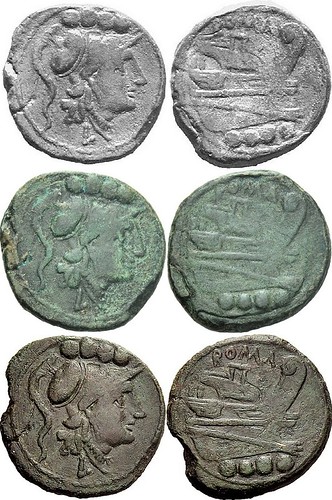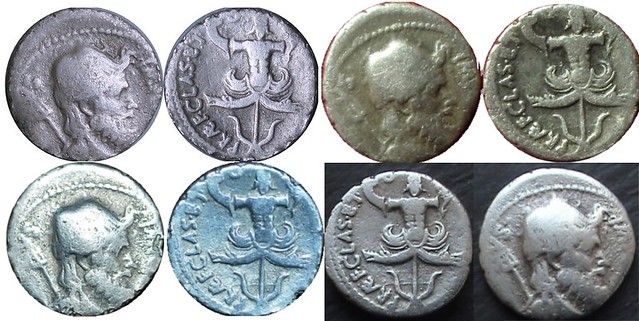If an obverse or a reverse is a die match to a known fake struck or pressed with modern dies it is fake. A fake is a fake, even if someone cannot tell it is fake or even if everyone cannot tell it is fake.
Of course yes when struck with modern designed dies.
For CAST
fakes or struck coins with the die made from an original moulded from a genuine coin, and when the
fakes are very low in number then there is a possibility that one of the known specimens may be the original host coin specially when that specimen is in an old or well-known
collection from which copies may have been take in all innocence. I show below three such dilemmas.
In the first case both coins are
fakes, unquestionably. Quite apart from the
evidence of casting, they differ each from the other in ways that show one cannot have been made from the other but must both stem from another source:

In the second case, the door is slightly ajar to the possibility that the lower item might be an original (the upper one plainly is not), but it fails different tests - the lower one does not look in
patina, metal, strike and so on like an original coin from that period. The metal is wrong (
Romans didn't strike in pure copper or high-copper bronze at the time,
nor are potential understrikes like this) and there is a softness to the 'strike' that suggests the mould have been made from an
electrotype; it has that texture. But the killer detail is the hair behind the neck - there is MORE detail in the obvious
fake than on the better looking item. So, both modern.

The third example is tough. The top two items are clearly
fakes and if you doubt that for a second just look at 9pm where both have metal infilling the gap in the lower coin.
Patina, surface etc are consistent with casts. The lower one at first glance could conceivably be original, but as with the second example above, knowing that
fakes exist I could not confidently say it is original, because if it is, it has evidently been cleaned and there are many small pinholes in the surface. I've actually handled it (as well as the middle example) and it looks
good to the sight, but would have to condemn it, considering its surface and knowing how its sister Minervas look like. So, all three modern.

Sometimes the comparisons are much easier, such as those below, about which nothing more needs to be said.

From what I've seen of these identical copy cases, the default should always be to assume ALL are
fakes - presume guilt rather than innocence in the case of identical copies - unless one coin can really prove itself beyond doubt. This is different from the usual case where one assumes that genuine looking and feeling coins are in fact genuine, and for
good reason, because the existence multiple identical copies has changed the balance of probabilities.





